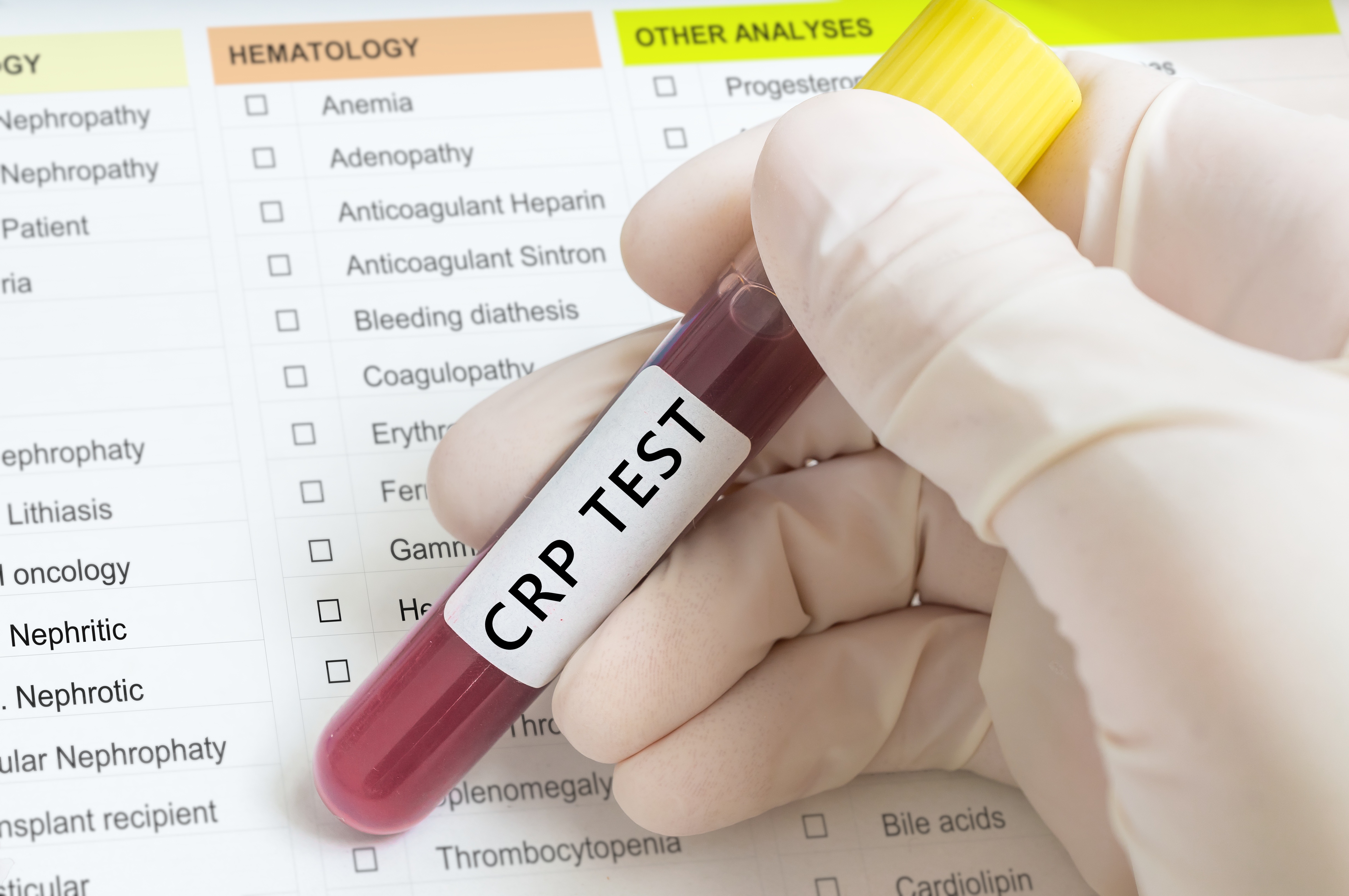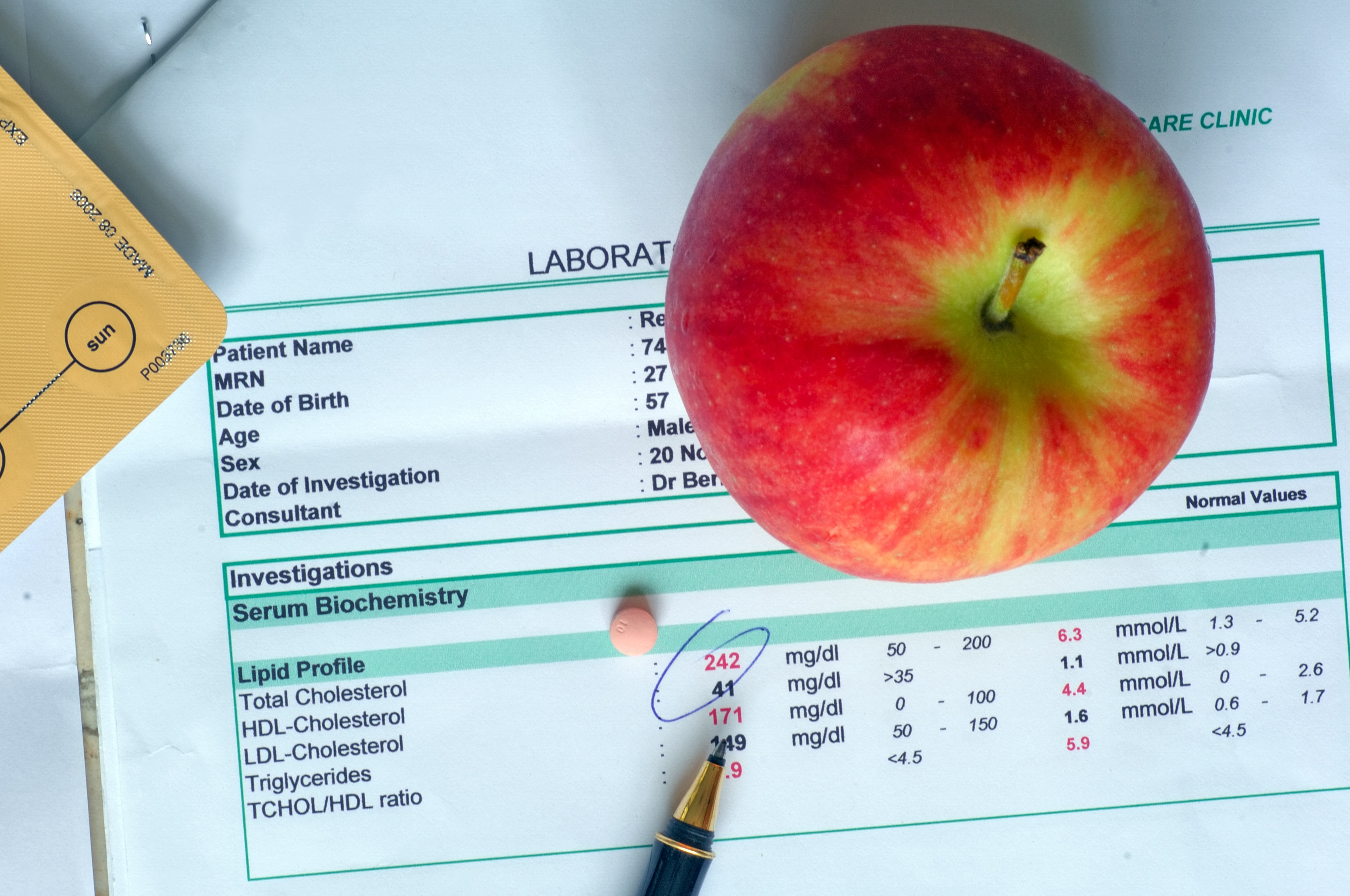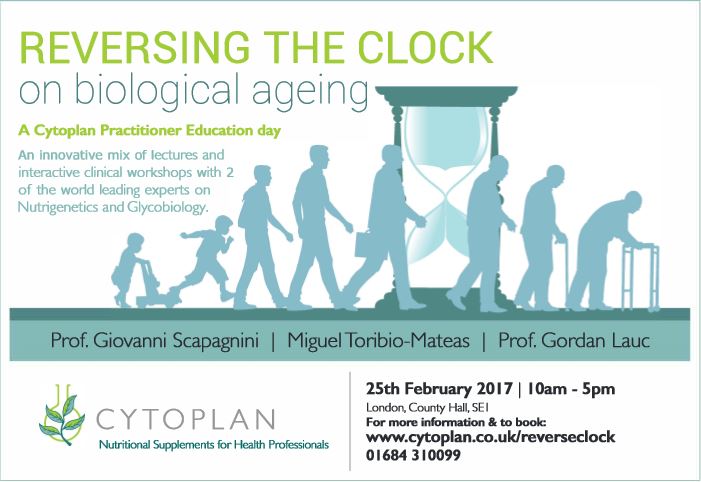Getting bogged down in the detail of functional tests? You’re not the only one. With a greater number of functional and genetic tests out there, some provided by reputable labs, some by lesser known, more “novel” outfits, this is a subject that is now at the forefront of the minds of most health practitioners.
In this week’s blog, experienced functional practitioner Miguel Toribio-Mateas shares with us how clinical applicability is the key to choosing the appropriate test, and how to do that to optimise clinical outcomes. Miguel discusses his top 5 considerations that he believes all functional practitioners should take into account before choosing the right test for their clients.
Miguel is an expert nutrition practitioner and educator and in this capacity he will facilitate the live clinical workshop at our upcoming event on 25th February. These workshop sessions will follow the talks of two World renowned speakers; Professor Giovanni Scapagnini and Professor Gordan Lauc. They will be showcasing suitable research to underpin your clinical cases, and helping you make sense of the science, by applying it in context. To find out more about this event, and to book your place, please follow this link.
Cytoplan will also be providing you with an exciting exhibitor area to network with your peers whilst learning about new products and opportunities. You can find out more about the companies exhibiting at our Cytoplan Education Event at the end of this blog.
Is the value of your functional testing getting lost in translation?
If you’re getting bogged down in the detail of functional testing, then you are not the only one. With a greater number of functional and genetic tests out there, some provided by reputable labs, some by lesser known, more “novel” outfits, this is a subject on which I receive many questions from confused practitioners who come to me for advice, mostly on clinical applicability.
How do you know you’re choosing the right test for your client and, once you go ahead and recommend it, have you got a better idea about how you’ll be able to help them feel better? The process involved can be stressful, not least because the reality is that tests run privately can be expensive and not everyone can afford them. This makes it even more important for you as a practitioner to know that the test you’re recommending will definitely add value to the process that is managing someone’s care as a health professional.
How can you know you’re choosing the right test whilst maximising the chances of adding a valuable edge to the support your providing? I’m going to keep it very simple and give you my humble, top 5 considerations that I believe all functional practitioners should take into account before choosing the right test for their clients.
Let’s start with the basics: what can’t be measured can’t be improved.
I guess this pretty much means that I’m in favour of taking some king of baseline measurements. In “Research Methods 101” kind of terminology, this is the simplest “repeat measures” kind of interventional study you should be running in your clinics. Whether it’s simple measures or more sophisticated biomarkers, the only rule is that they must be “things that change”, such as blood pressure or waist circumference. These are free to take – or nearly free, after investing a few quid in a blood pressure machine – and they can provide very interesting clinical audit results.
Obviously more sophisticated markers make more interesting audit, but it all boils down to the very same principle. If you don’t know whether someone is inflamed – because their C-reactive protein (CRP henceforth) is high – or not, then you can’t tell them ethically that it was your dietary advice that made them less inflamed. You could however correlate changes in their diet over time with changes in their CRP )e.g. less highly processed foods, and more green vegetables).
If you’re ‘geeky’ enough and have enough time to play around with data, you could even plot a graph that shows the increase in vegetable intake (one line representing vegetable portions per day) maps against the decrease in CRP. Obviously the graph is not necessary, although I am sure your client would love you for it and it’d be a great clinical aid for them to take away with them. Technicalities aside, what you can’t measure you can’t improve, and following a functional model of practice properly does require repeat measures that allow you to track your clients’ progress over time.
How much did you say again?
Some logical follow up considerations the above points are:
- Cost of the test. If a test is very costly, your client is less likely to want to repeat it.
- Can the test be “taken apart”, i.e. can some of the elements be repeated more cost effectively than repeating the whole test again? For example, some blood tests are “modular”. The way I practise is that I’ll go with the comprehensive of blood tests first, and then only retest those markers that have been identified as problematic. Depending on the marker, retesting time can vary. I tend to find that many of my client have issues with high homocysteine and low vitamin D, and I tend to retest 3 months after the initial readings to measure the effect of my recommendations.
- Does the test even need to be repeated? Genetic tests, for example, don’t need to be repeated as the genetic variations from the norm reported won’t change over time, so any genetic test you run will only need to be run the once. You may only need to repeat it if the panel had changed substantially and you needed to get information about variants in genes that were not covered in the initial test. But if a gene has been reported to have a specific variant, this won’t change in a follow up test, e.g. if you’re MTHFR C667T homozygous all genetic tests should confirm this fact. In fact you’re likely to find out that most genetic tests use the same kind of computer chips to analyse DNA (namely a machine called “Illumina”) so they’re likely to be using the same kind of technology, whether it’s a 23andme or a specific panel you got from another lab.

What is your aim? Aetiology vs diagnosis, how this test informs a way forward.
The investment involved in functional testing goes beyond finances. There are hopes and expectations to be met and these increase with the price tag, i.e. if your client pays £50 for a test, they’ll be expecting less than if they pay £2,000. I am not a salesman. I have no interest in sales or money (although I like spending it) and want to focus on clinical details and not spend valuable consultation time talking about the cost of tests.
It’s always worth taking a moment to reflect on what you’re looking to achieve from carrying out a test on your client. Are you looking to work out how they arrived to where they are today, health-wise, i.e. are you looking to investigate the aetiology of their current health state? For as interesting as this can be, if that’s the case, make sure that your client is in agreement and that they understand that knowing more about how the potential root causes of their complaints is completely different to “getting a diagnosis”.
I hear some people say “I was diagnosed this or that by my nutritionist”. This is inaccurate, and “nutritionists” can’t diagnose anyway, so I’d make this very clear to avoid disappointment. Hopefully your client will see the value in knowing more about the reasons that might have impacted their progress. This is when the most satisfaction is experienced by both parties involved. I find it particularly exciting when my clients are keen to learn about how their genetics provide a backdrop that make it more or less probably for certain markers to be high or low.
Following with the same example used by Prof. Scapagnini is his recent interview (you can find a link to this blog here), if I knew that my client was a homozygous for both MTHFR C667T and A128C, I would insist that they had a folate and B12 blood test. I prefer red blood cell folate (also called “active folate and B12”) because it gives me an indication of the time validity of these metabolites, i.e. around 3 months, just like the red blood cell lifespan.
Literature also supports the use of serum folate and B12, but arguably this could be affected more readily by factors as simple as whether that person took a vitamin tablet the night before the test, whereas you wouldn’t see that immediate change in RBC folate and B12. By putting together the susceptibility to folate and B12 deficiency and the materialisation of that increased susceptibility – seen in the folate and B12 test – you can be a lot more precise in your recommendations. If you add homocysteine readings to the above, you add another layer of information that allows you to work out whether the increased susceptibility to higher homocysteine levels experienced by people with homozygous MTHFR C667T and A128C is actually materialised for that particular individual.
Precision nutrition requires a multitude of data points, and you as a practitioner need to become a self-taught bioinformatician, identifying the relationships between these multitude of markers and their behaviour. If the test you’re about to use makes it easy for you to do so, that’s a plus. If, on the other hand, it makes no sense to you from that point of view, you may need to rethink its clinical value. Additionally, think about how these interconnections you’ve identified help you plot a way forward for your client that maximises their changes of feeling better. Do you now know more about what foods to focus on, and what supplements they may need or are you left as confused as when you started. If the latter is true, don’t waste your client’s money and your time, and go back to the drawing board.

Show me your data and I’ll show you mine.
When recommending a test, one of the fist things any practitioner must take into account is whether it has been used before, ideally in a similar setting. Are there any published documents – ideally peer-reviewed papers – on both the methodology used and the results obtained? Do you know about the demographics of the individuals the test has been performed in? This is very important because a test will display results as reference ranges which will have been calculated on the basis of a database of results for individuals who may share nothing with you.
Say you chose a test and it turned out that the results have been calculated on healthy 18 to 35 year old Chinese people, but your client is in his 70’s and is from Irish descent. Does your lab publish demographics of the population upon which the test reference ranges are calculated? Would the reference ranges for Chinese young people map nicely to this older Irish gentleman? Are there any papers that allow you to draw comparisons between populations, e.g. two papers using the same test in Chinese and Irish populations, so that you’re happy to go ahead with the test knowing that you may have to take extra considerations into account, such as more likelihood of high/low levels of marker X, Y or Z for one of these populations, with all other factors controlled for? These are all important things to take into account so that you’re absolutely certain that the tool you’re using is valid for the type of assessment that you want to perform.

What does that mean in plain English?
This is probably the most important consideration to take into account when choosing a test. It should be plain common sense, but I’ve seen too many practitioners succumb to the appeal of pages and pages of dense data that may be very interesting academically, or in an exploratory research setting, but that is not easily translatable into a clear intervention with measurable end points.
Following with my previous example, the perfect scenario to illustrate this is high homocysteine. It responds well to supplementation with B vitamin methyl donors, so if you have seen levels over 15μ mol/L (or even of over 10 μmol/L, in cases of family history of cardiovascular disease), you know that supplementing with folate, B6 and B12 is likely to have a positive effect. You can work out the levels needed by further testing of these vitamin levels. And when you test again after X number of weeks (I normally recommend 12) you can see the difference.
This is very clear cut, black and white, and easy to measure. Some tests have a multitude of markers, some of which work well along the lines of the above, and some of which don’t. If the overall balance is right, and the cost is not prohibitive, reflect on the options and choose wisely. Straightforward translation is always easy when you’re dealing with other health professionals. Inter-professional learning is one of the aspects I’m researching as part of my doctorate. The easier it is for another health professional to pick up your test results and to understand them, the easier the communication between you will be. Otherwise the lack of understanding can give rise to misunderstandings and it is the client that loses out. Keeping it simple often is best.

Conclusion
I hope my tips help you when you next choose a test. My final piece of advice is to always keep track of the data you’re collecting. Whether you’re feeding back to a research project, or just collecting data in order to publish an anonymous case history or a blog, it helps to always work as if you were conducting research. Use a method that allows you to audit your clinical practice and to compare cases, or to identify the types of conditions you’re helping your clients with, and the types of interventions you’ve used that helped and those that didn’t and why. This will put you in the best place to help your clients in a consistent way that is informed by practice-based evidence.
 Miguel is a doctoral researcher in cognitive ageing who’s experienced the research process from the laboratory bench – having completed a lab-based Masters in Clinical Neuroscience focusing on brain ageing – to the delivery of science findings in the consultation room, delivering quality individualised nutrition care to his clients from 2009. Miguel’s background includes 15+ years in senior training roles in life sciences and medical publishing, and he has trained scientists and researchers around the world.
Miguel is a doctoral researcher in cognitive ageing who’s experienced the research process from the laboratory bench – having completed a lab-based Masters in Clinical Neuroscience focusing on brain ageing – to the delivery of science findings in the consultation room, delivering quality individualised nutrition care to his clients from 2009. Miguel’s background includes 15+ years in senior training roles in life sciences and medical publishing, and he has trained scientists and researchers around the world.
With many thanks to Miguel for this blog, if you have any questions regarding the health topics that have been raised please don’t hesitate to get in touch with me (Amanda) via phone; 01684 310099 or e-mail (amanda@cytoplan.co.uk).
Amanda Williams and the Cytoplan Editorial Team: Miguel Toribio-Mateas and Joseph Forsyth.
A Cytoplan Practitioner Education Day
Miguel is an expert nutrition practitioner and educator and in this capacity he will facilitate the live clinical workshop at our upcoming event on 25th February. These workshop sessions will follow the talks of two world renowned speakers; Professor Giovanni Scapagnini’s and Professor Gordan Lauc. They will be showcasing suitable research to underpin your clinical cases, and helping you make sense of the science, by applying it in context. To find out more about this event and to book your place, please follow this link.
During the breaks you will also have access to our exciting exhibitor area. Below are the list of companies who will be exhibiting at this event:
BANT
The British Association for Applied Nutrition and Nutritional Therapy (BANT) is the professional body for Registered Nutritional Therapists. Its primary function is to assist its members in attaining the highest standards of integrity, knowledge, competence and professional practice, in order to protect the client’s interests, nutritional therapy and the Registered Nutritional Therapist. BANT offers a wide range of benefits to student and full members and has its finger on the pulse for any changes or new developments within this dynamic profession.
BANT Website – http://www.bant.org.uk
DF Medica
A research-led provider of genetic testing, supported by top scientists and 2 academic research centres for genetics in Italy. DF Medica develops DNA testing programmes aimed at individual health management.
“The uniqueness of each individual originates from the countless relations between their DNA and the surrounding environment. We work with practitioners who are able to translate our findings into personalised recommendations.”
DF Medica Website – http://www.dfmedica.it/en
GlycanAge Ltd.
GlycanAge Ltd is an academic startup located in Oxfordshire, UK. It was incorporated to enable translation of scientific results into the GlycanAge® test. Our scientists have been studying ageing and glycans for over 20 years and after studying over 40.000 people from all around the world, we developed a new revolutionary GlycanAge® test that can reveal the difference between a person’s chronological age and their real biological age.
The GlycanAge® test is available only through a network of registered healthcare providers. A research collaboration project to test 1,000 individuals was signed with BANT, and GlycanAge is looking to recruit BANT members as research partners. Learn more at the event.
GlycanAge Website – http://glycanage.com
Map My Gut
Led by Professor Tim Spector, Map My Gut is a microbiome assessment spinoff of the Department of Twin Research at King’s College with a focus on practitioner education and research collaboration. Map My Gut is currently on beta testing and is working closely with BANT members. Learn more about how you can help build the evidence on interventions for gut health working with leading scientists in the field at the event.
May My Gut Website – https://mapmygut.com
The Natural Dispensary
The Natural Dispensary is an independent Nutritional Supplement Mail Order Company dedicated to Practitioners and their Clients by referral. With over 10,000 Practitioner prescribed products under one roof, our aim is to provide an efficient one stop service.
The Natural Dispensary Website – https://naturaldispensary.co.uk
Nutritionist Resource
Nutritionist Resource is a website dedicated to offering a simple way to connect with nutrition professionals across the UK. You may have a health condition where symptoms can be managed, or prevented by following a tailored diet, or you may be an athlete looking for nutrition advice. You may simply be looking to better your health by adopting a new, balanced diet and healthy way of living.
Nutritionist Resource Website – http://www.nutritionist-resource.org.uk
CNELM
CNELM understands that making the right choice for your education and future career is important. As a private educational centre they are committed to providing nutrition courses that have international and professional recognition.
CNELM Website – http://cnelm.co.uk
Institute for Optimum Nutrition (ION)
The Institute for Optimum Nutrition (ION) is an independent, not for profit educational charity with a mission is to educate and enthuse, instilling Optimum Nutrition as the foundation of health for all.
ION Website – https://www.ion.ac.uk
Genova Diagnostics
Headquartered in Asheville, N.C., Genova Diagnostics is a global clinical laboratory, pioneering a systems approach that supports healthcare providers in the personalized treatment and prevention of chronic disease.
Genova Diagnostics Website – https://www.gdx.net
Regenerus Labs
Regenerus Labs represents over 15 different laboratories , provide more than 200 different tests, and deliver internationally accredited laboratory testing services to the doorstep of health professionals and their patients.
Regenerus Labs Website – http://www.regeneruslabs.com
Last updated on 5th March 2020 by cytoffice




This is a decent and sane article. It makes sense to work through things in a systematic way and not jump in to testing too quickly. Keep it up chaps!
Excellent pointers – concise, informative and very useful. More like this please!
I’m pretty pleased to uncover this site. I want to to thank you for ones time for this particularly wonderful read!!
I definitely appreciated every part of it and i also have you bookmarked
to see new information in your web site.
wholesale nhl jerseys
Have you ever thought about including a little bit more than just your articles?
I mean, what you say is valuable and everything.
But think of if you added some great graphics or
video clips to give your posts more, “pop”!
Your content is excellent but with images and videos, this website could undeniably be one of the greatest in its field. Awesome blog!
top
I was able to find good advice from your blog
articles.92